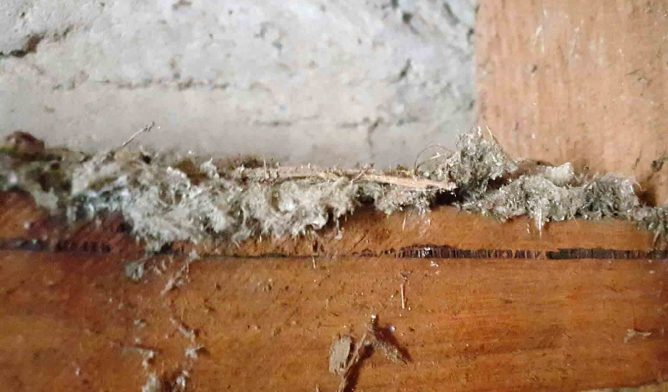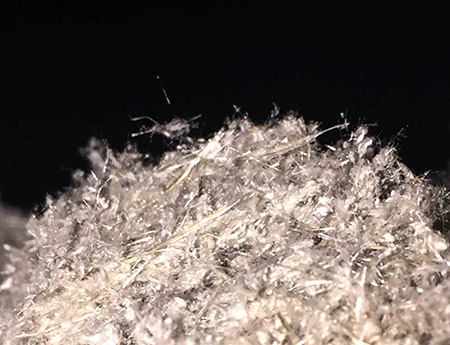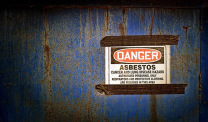Mr. Fluffy Asbestos: Photos Educate Canberra Homeowners
Asbestos Exposure & BansWritten by Beth Swantek | Edited By Walter Pacheco

New photos of loose asbestos in a Mr. Fluffy home in Canberra show an extreme example of the contamination that has endangered residents in Australia’s capital city for decades.
The Australian Capital Territory (ACT) government’s Asbestos Response Taskforce took the pictures inside one of the 1,022 Canberra homes known to contain Mr. Fluffy insulation.
Thousands of homes were insulated with Mr. Fluffy-brand asbestos in the 1960s and ’70s. Breathing the insulation can cause the rare cancer mesothelioma, which develops 20 to 50 years after asbestos exposure.
“What we found inside the walls was a very significant amount of asbestos insulation,” Andrew Kefford, head of the Asbestos Response Taskforce, said. The photos showed an asbestos-packed wall cavity and a close-up of the loose fibers.
The task force shared the images to inform the public of what the Mr. Fluffy asbestos insulation looks like and to show how loose fibers can migrate all throughout a home’s many crevices.
The government later demolished the photographed home as part of the Buyback and Demolition Program it launched in 2015 in response to the Mr. Fluffy catastrophe.
Asbestos Insulation Is a Nightmare for Canberra Homeowners
Mr. Fluffy, named for its fluffy appearance, is an insulation product made of loose amosite asbestos.
Unlike many other asbestos-containing materials, Mr. Fluffy is not held together with a bonding agent and easily releases toxic fibers into the air.
In the 1980s, the ACT government surveyed more than 8,000 Canberra homes to uncover the full extent of contamination. The cleanup program that followed removed visible asbestos from more than 1,000 homes and sealed off areas where it was found.
But decades later, in 2013, the government discovered asbestos lingered in a remediated home, proving the initial cleanup wasn’t as effective as initially believed.
The following year, government officials ordered Mr. Fluffy homes in Canberra unsafe for habitation because they continued to pose asbestos-related health risks to homeowners and their families.

Despite efforts to vacuum the loose asbestos and spray affected areas with sealant, airflow stealthily transported the carcinogenic fibers throughout the houses into walls and crevices. In many remediated homes, fibers remained in roof spaces, floor spaces, wall cavities and other areas.
“Those fibers are penetrating the living spaces either through holes in the walls or through cracks in the cornices or other penetrations,” Kefford said.
Homeowners Allowed First Chance to Buy Back Their Property
In October 2014, the ACT government announced the $1 billion Buyback and Demolition program to mitigate the risk of Mr. Fluffy asbestos in the Canberra community.
Government officials concluded the only enduring solution was to acquire and demolish all affected homes.
The program allows homeowners to buy back their property after the government destroys the contaminated homes and cleans the land. Lots not repurchased by homeowners will go to auction. The government auctioned the first 10 lots on April 12.
For people who chose the voluntary Buyback Program, the government offered market value for homes and provided relocation assistance grants.
Originally, the program aimed to remove everything from contaminated properties, including trees, gardens and pools. Later, the plan changed, with Kefford stating established gardens would make the lots more appealing and posed no risks if soil tests came back clean.

The Buyback and Demolition program already has made significant progress:
- 1,022 affected properties identified
- 4,000 residents impacted
- 971 buybacks accepted
- 727 houses scheduled for demolition
- 84 houses demolished as of February 2016
- 250 planned demolitions by end of 2016
Scheduled demolitions will continue until 2018 and may extend into 2020. The Asbestos Response Taskforce will update its demolition schedule every February and August.
As the intensive demolition schedule continues, the task force is working with homeowners planning to rebuild their properties.






